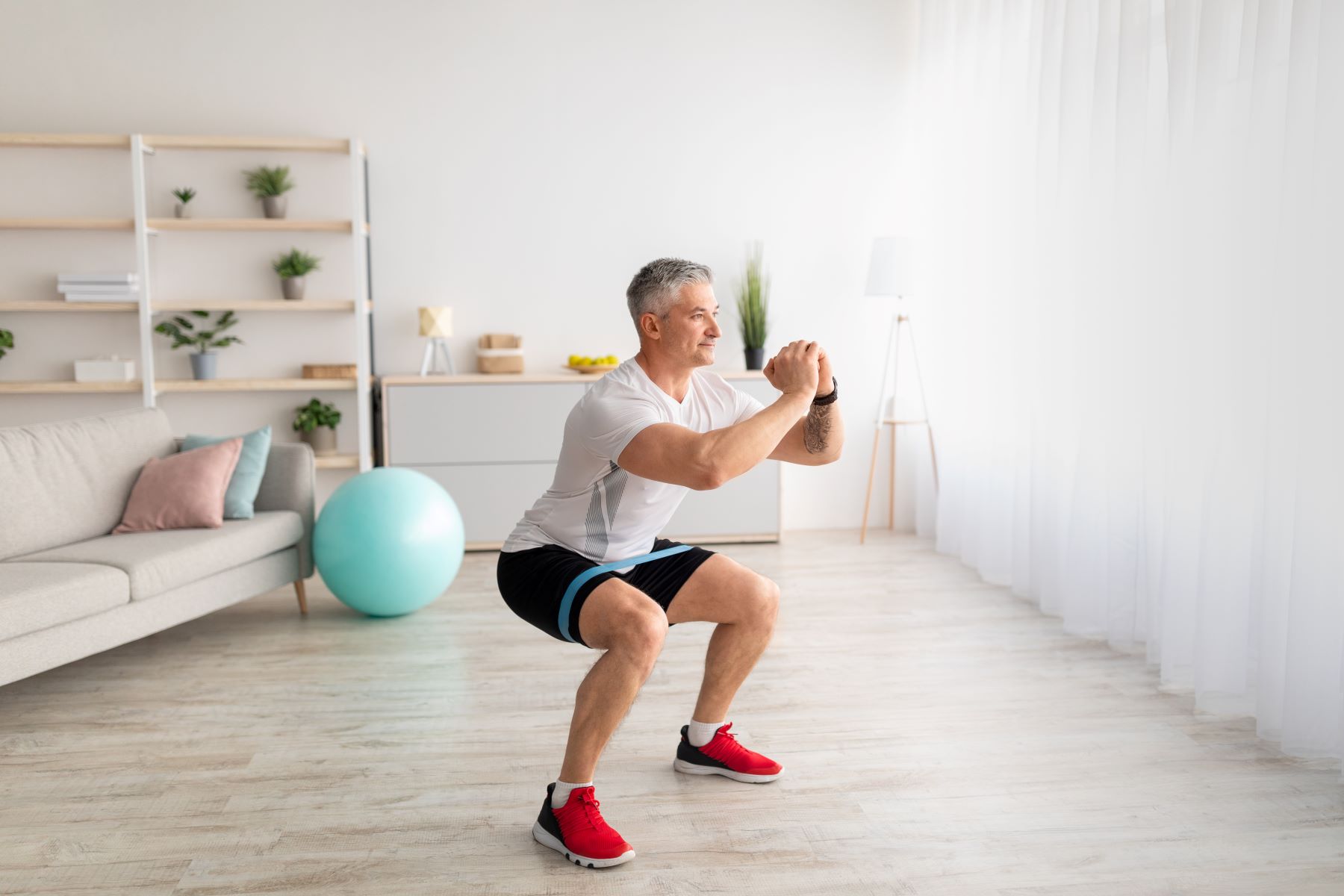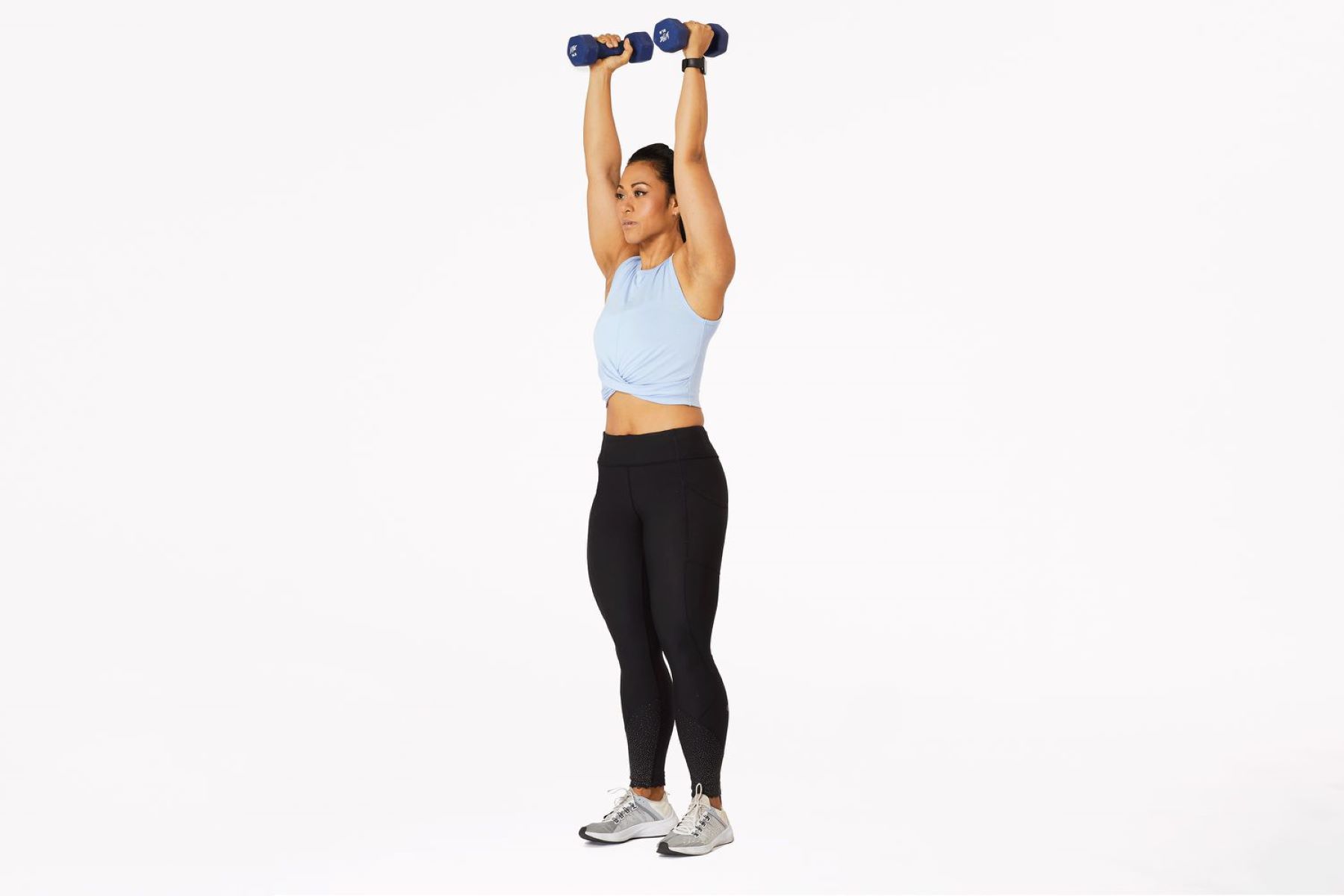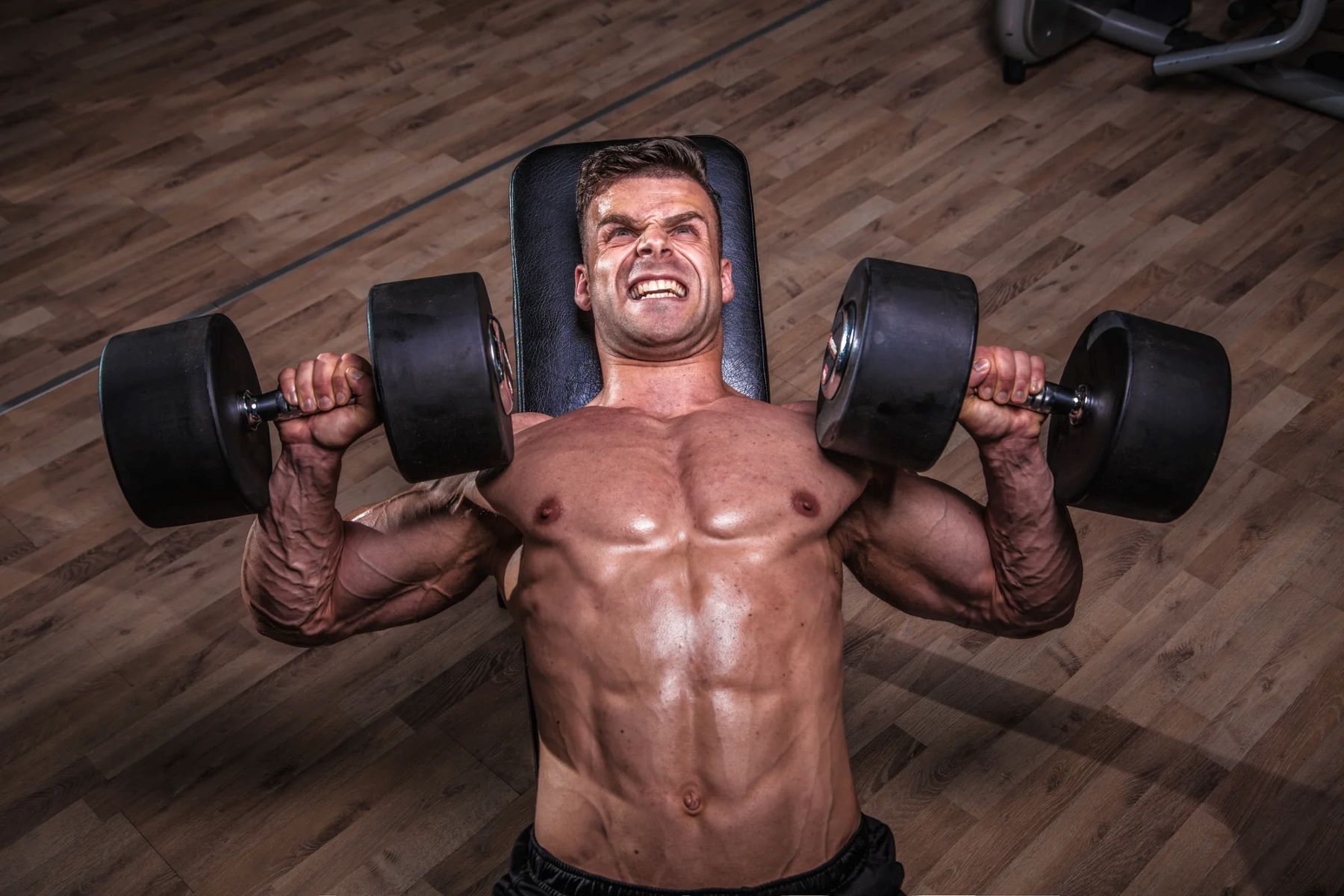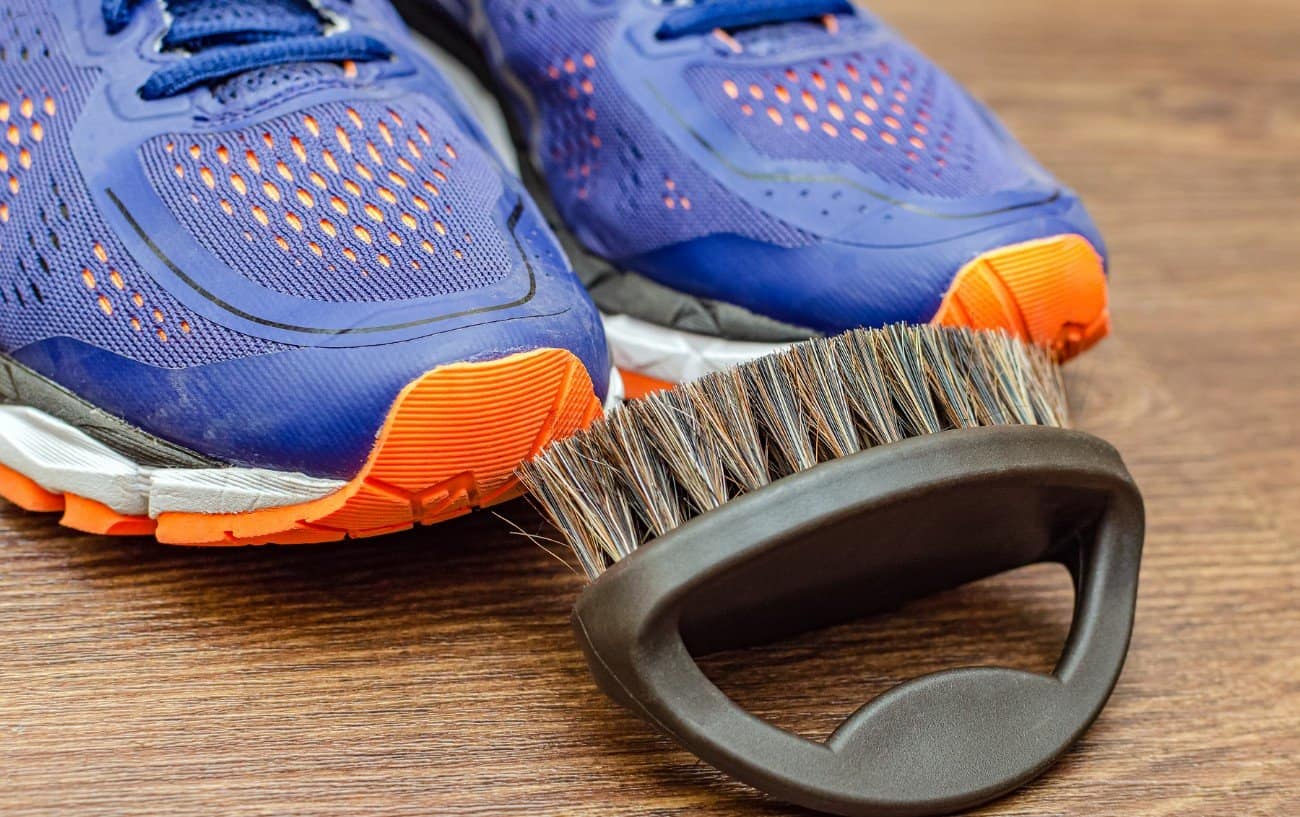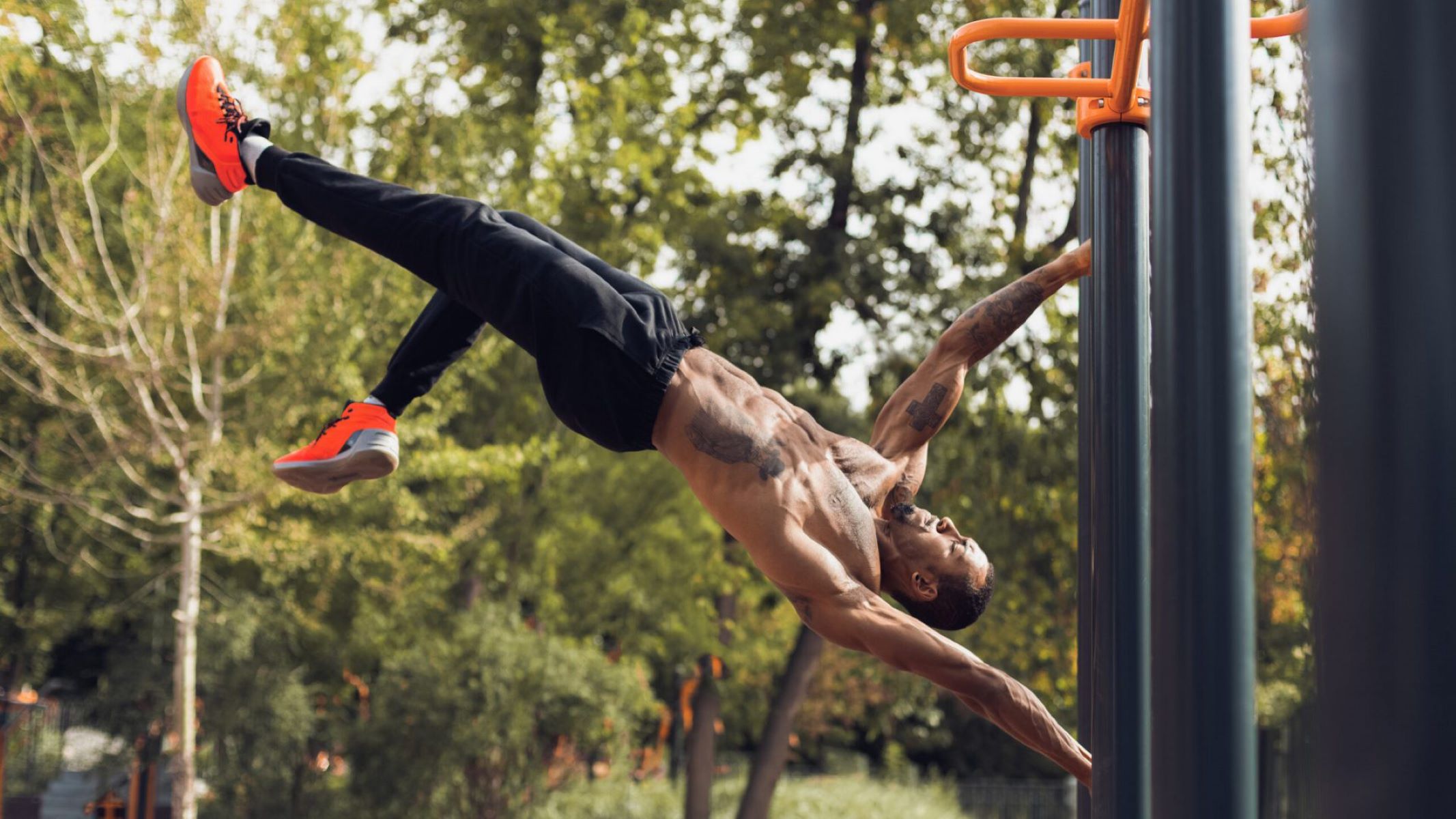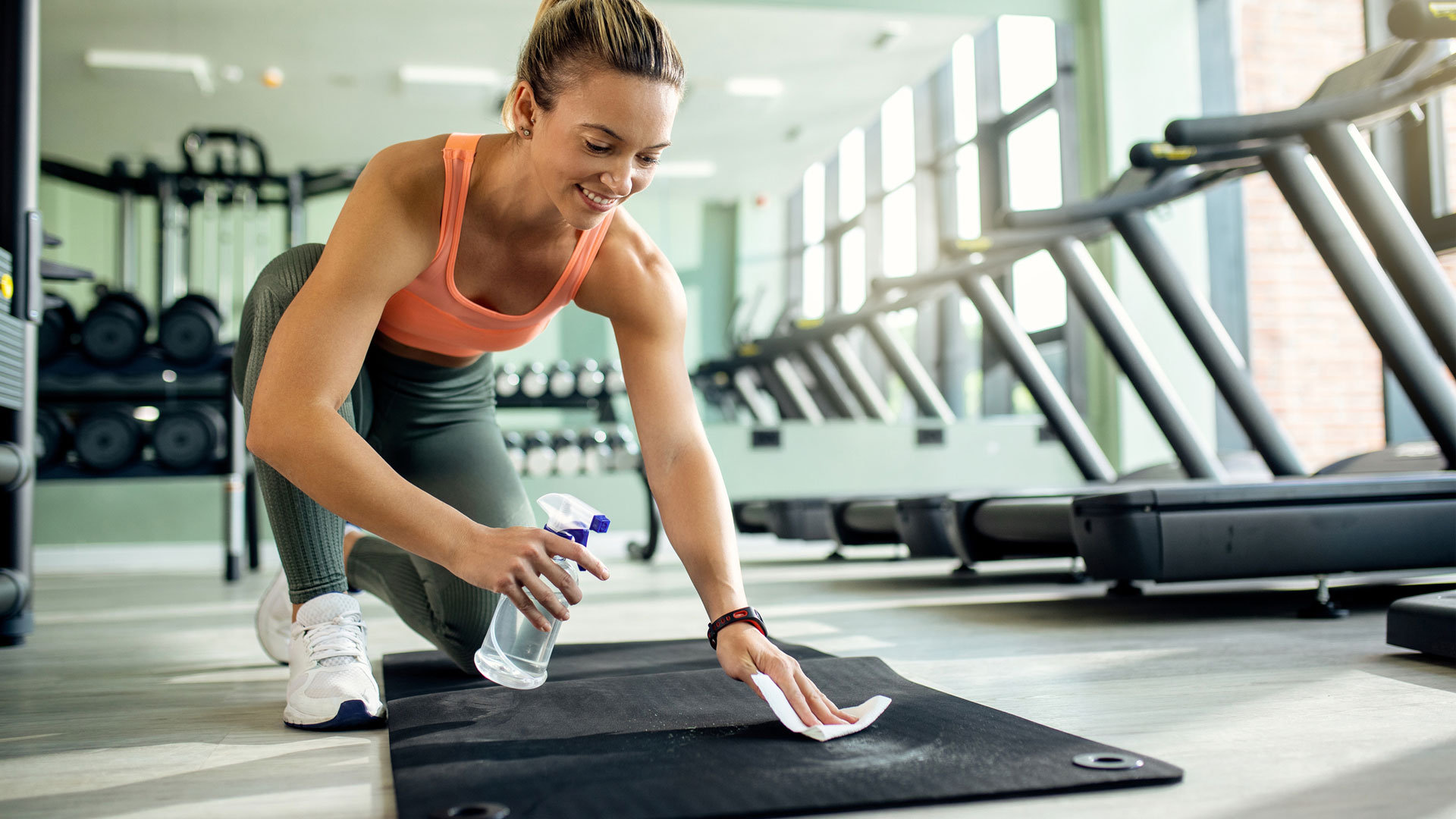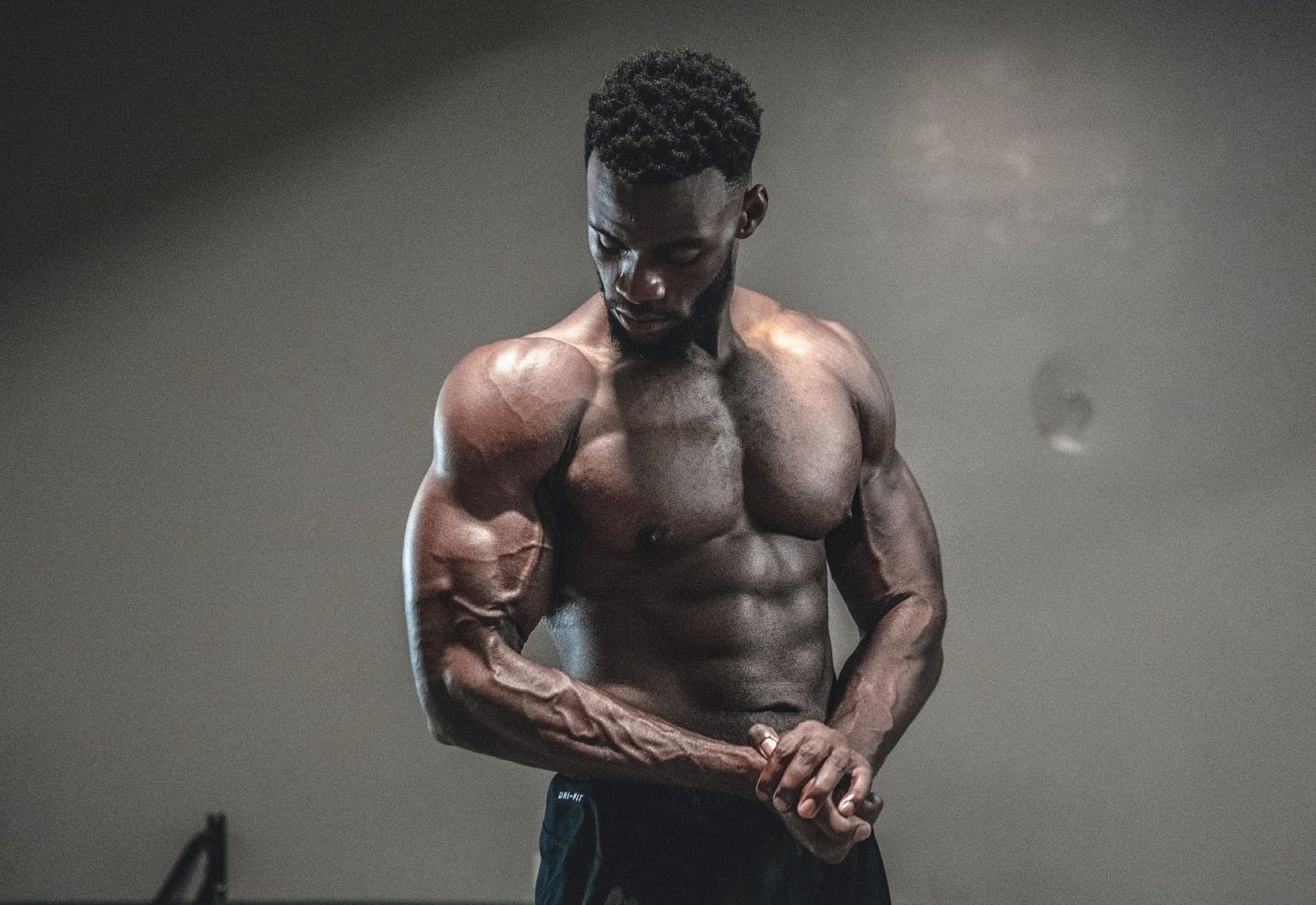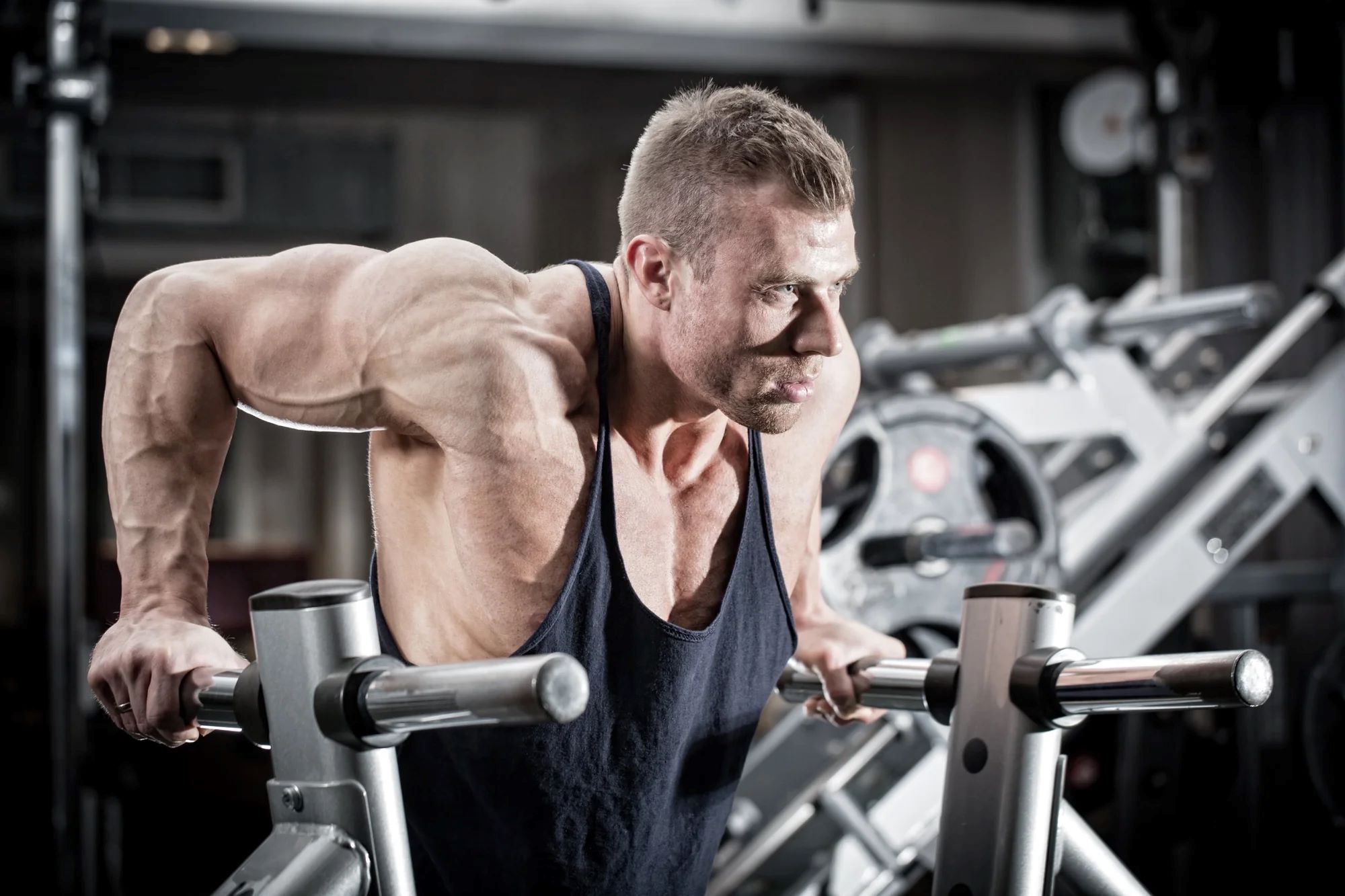

Featured
What Does Dips Workout
Modified: August 19, 2023
Discover the benefits of dips workout on Featured! Improve your upper body strength and sculpt your triceps with this effective exercise. Start your fitness journey today!
Introduction
Dips workout is a highly effective exercise that targets multiple muscle groups in the upper body, making it a popular choice among fitness enthusiasts. This compound movement primarily engages the triceps and chest muscles, but also recruits the shoulders and core for stability.
Whether you’re a beginner or an advanced lifter, incorporating dips into your training routine can yield a wide range of benefits. Not only does it help build strength and muscle, but it also improves overall upper body stability, increases upper body pressing power, and enhances muscle definition.
In addition to the physical benefits, dips workout can also improve your functional fitness. It mimics natural pushing movements that we perform in our daily lives, such as pushing open a heavy door or lifting and carrying objects. By strengthening the muscles involved in these motions, dips can make everyday tasks easier and more efficient.
Furthermore, dips can be done with minimal equipment, making them accessible for various fitness levels and training environments. Whether you have access to a dip bar, parallel bars, or even just a sturdy chair or countertop, you can perform this exercise and reap its many benefits.
In this article, we will explore the benefits of dips workout, the specific muscles targeted, proper form and technique, variations of dips exercises, tips for an effective dip routine, common mistakes to avoid, and how to incorporate dips into your fitness routine. By the end of this article, you’ll have a comprehensive understanding of the dips workout and be ready to add it to your routine for maximum results.
Benefits of Dips Workout
Dips workout offers a wide range of benefits that can greatly enhance your upper body strength, muscle development, and overall fitness. Let’s take a closer look at the advantages of incorporating dips into your workout routine:
- Triceps Development: Dips primarily target the triceps muscles, which are responsible for extending the elbow. By engaging in regular dips workout, you can effectively build strength and size in your triceps, leading to enhanced arm definition and improved performance in pushing movements.
- Chest Activation: Along with triceps, dips also engage the chest muscles (pectoralis major) to a significant degree. This allows for balanced upper body development, particularly in the lower portion of the chest. Adding dips to your routine can contribute to a well-rounded chest and improve your bench press strength.
- Shoulder Stabilization: Dips require a stable shoulder joint, which engages the muscles of the rotator cuff and the deltoids. By performing dips with proper form, you can strengthen these muscles and improve shoulder stability, reducing the risk of injury and enhancing overall upper body strength.
- Core Activation: Dips require core engagement to maintain stability and control throughout the movement. As a result, performing dips regularly can strengthen your core muscles, including the abdominals and obliques, improving your overall functional strength and posture.
- Increased Upper Body Pressing Power: Dips target multiple muscle groups simultaneously, creating a compound movement that translates into increased upper body strength. By progressing with dips and continually challenging yourself, you can develop greater pressing power in exercises like the bench press and shoulder press.
- Improved Overall Muscle Definition: Dips engage multiple upper body muscle groups, leading to improved muscle definition and aesthetics. By incorporating dips into your routine, you can sculpt and define your triceps, shoulders, chest, and even your core, creating a more chiseled and well-rounded physique.
With these benefits in mind, it’s easy to see why dips workout is a popular choice among fitness enthusiasts. Whether your goal is to build strength, increase muscle size, or improve functional fitness, including dips in your routine can help you achieve your desired results.
Muscles Targeted by Dips
Dips are a compound exercise that targets multiple muscle groups in the upper body. By performing dips with proper form and technique, you can effectively engage and strengthen the following muscles:
- Triceps: Dips primarily target the triceps brachii, which is the muscle located at the back of the upper arm. This muscle is responsible for extending the elbow joint. Dips provide an excellent stimulus for triceps development, leading to increased strength and size.
- Chest: Along with the triceps, dips also engage the pectoralis major, which is the larger chest muscle. As you lower your body during the dip motion, the chest muscles are stretched, and as you push yourself back up, they contract. This movement pattern activates the lower portion of the chest, helping to develop a fuller and more defined chest.
- Shoulders: Dips require shoulder stabilization, which engages the deltoid muscles. The anterior deltoids (front of the shoulders) are particularly involved during dips, as they help with the pushing motion. By including dips in your routine, you can strengthen and develop your shoulder muscles, contributing to improved shoulder stability and overall upper body strength.
- Core: Dips engage the core muscles to maintain stability and control throughout the movement. The muscles of the abdominals and obliques are activated to prevent excessive swinging or arching of the back. This core engagement helps improve overall functional strength and stability in daily activities and other exercises.
- Forearms: While not the primary muscle group targeted, dips also engage the muscles of the forearms to a certain extent. As you grip the dip bars or handles, your forearm muscles contract to support your body weight and maintain grip strength. Over time, dips can help improve forearm strength and grip endurance.
It’s important to note that the degree of muscle activation may vary based on your body mechanics, technique, and form. Additionally, the emphasis on certain muscles may be altered by modifying the grip width, body positioning, or adding additional weight. Experimenting with different variations can help target specific muscle groups to achieve your desired goals.
By incorporating dips into your workout routine, you can effectively engage and strengthen these key upper body muscle groups. Whether your focus is on building strength, increasing muscle size, or improving functional fitness, dips are a valuable exercise for balanced upper body development.
Proper Form and Technique for Dips
Performing dips with proper form and technique is vital to maximize the effectiveness of the exercise and prevent injury. Follow these guidelines to ensure you’re executing dips correctly:
- Positioning: Stand between parallel bars or use dip bars with a shoulder-width grip. Hold onto the bars with a firm grip, ensuring that your hands are secure and your wrists are straight.
- Starting Position: Hoist yourself up by straightening your arms, keeping your legs crossed or extended in front of you. Maintain a slight forward lean with your chest up and shoulders back.
- Lowering Phase: In a controlled manner, slowly bend your elbows and lower yourself until your shoulders are at or slightly below your elbows. Maintain an upright posture and avoid excessive forward lean.
- Bottom Position: At the bottom of the dip, pause briefly to ensure a full range of motion and to engage the targeted muscles. Keep tension in the muscles without bouncing or relying on momentum.
- Pushing Phase: Straighten your arms and push yourself back up to the starting position. Focus on using the chest and triceps muscles to initiate the movement, while maintaining proper form and control.
- Breathing: Inhale as you lower your body and exhale as you push back up. This breathing pattern helps stabilize the core and provides optimal oxygen supply throughout the exercise.
- Range of Motion: Strive for a full range of motion by lowering yourself until your shoulders are at or slightly below your elbows. Avoid cutting the range short as this can limit the effectiveness of the exercise.
- Engage the Core: Keep your core muscles engaged throughout the exercise to maintain stability and prevent excessive swinging or arching of the back. A strong core will also help you generate more power during the movement.
- Controlled Tempo: Perform the dips with a controlled tempo, focusing on proper form and technique rather than speed. This ensures that you’re engaging the targeted muscles and minimizing the risk of injury.
Remember, proper form and technique are crucial for a safe and effective dips workout. If you’re having difficulty maintaining proper form, start with assisted dips using resistance bands or use a dip machine until you build sufficient strength and stability to perform bodyweight dips. Gradually progress to more challenging variations and consider working with a qualified fitness professional to fine-tune your technique and ensure optimal results.
Variations of Dips Exercises
Variations of dips exercises can help target different muscle groups and provide progressive challenges as you advance in your fitness journey. Here are some popular variations to consider incorporating into your dips routine:
- Weighted Dips: Once you have mastered bodyweight dips, you can add additional resistance to further challenge your muscles. You can use a weight belt, weighted vest, or hold a dumbbell between your feet to increase the load on your muscles.
- Narrow Grip Dips: Performing dips with a close grip places greater emphasis on the triceps muscles. Bring your hands closer together on the bars, keeping your elbows tucked in by your sides throughout the movement.
- Wide Grip Dips: Using a wider grip during dips shifts more focus onto the chest muscles. Position your hands wider than shoulder-width apart on the bars or handles and perform the dips with a controlled motion.
- Assisted Dips: If you’re still building strength or struggling to perform bodyweight dips, assisted dips can help. Utilize resistance bands or a dip machine to offset some of your body weight, allowing you to gradually build strength and work towards unassisted dips.
- Ring Dips: Ring dips are performed using gymnastic rings, which require greater stabilization and engage more muscles. These dips target the triceps, chest, shoulders, and core while also challenging your balance and coordination.
- Handstand Dips: Handstand dips involve performing dips upside down with your hands on the floor or against a wall. This variation places additional stress on the shoulders and significantly engages the core for stability.
- Parallel Bar Dips: Parallel bar dips are the traditional form of dips. They can be performed on dedicated dip bars or using parallel bars found in some fitness facilities. This variation allows for a greater range of motion and targets the triceps and chest effectively.
- Bench Dips: Bench dips are performed using a bench or chair. Position your hands on the edge of the bench behind you and dip your body down by bending your elbows. This variation places more emphasis on the triceps.
These are just a few examples of dips variations, but there are many more possibilities to explore. Experiment with different grips, equipment, and angles to find the variations that work best for your goals and preferences. Remember to maintain proper form and technique with each variation to ensure maximum effectiveness and reduce the risk of injury.
Tips for Effective Dips Workout
To get the most out of your dips workout and optimize your results, consider implementing these tips:
- Warm-up: Before starting your dips workout, warm up your upper body with dynamic stretches and light exercises. This helps increase blood flow, loosens up the muscles, and prepares your body for the workout ahead.
- Focus on Proper Form: Maintaining proper form and technique is crucial for the effectiveness and safety of your dips workout. Keep your core engaged, shoulders back, chest up, and move through a full range of motion with controlled tempo.
- Incorporate Progressive Overload: As with any exercise, it’s important to continually challenge your muscles to promote strength and muscle growth. Gradually increase the resistance, such as adding weights or progressing to more advanced variations, to ensure consistent progress.
- Listen to Your Body: Pay attention to how your body feels during and after dips. If you experience pain or discomfort, especially in your shoulders or elbows, consider adjusting your technique, reducing the load, or consulting with a healthcare professional or fitness expert.
- Control the Negative Phase: The downward or eccentric phase of the dip is just as important as the upward or concentric phase. Slowly lower yourself with control, feeling the muscles engage and stretch. This helps stimulate muscle growth and increases time under tension.
- Include Dips in a Well-rounded Routine: Dips are a valuable exercise, but it’s important to incorporate them into a comprehensive workout routine that includes a variety of exercises targeting different muscle groups. This helps ensure overall muscle balance and prevents overemphasis on certain areas.
- Rest and Recovery: Allow adequate rest and recovery between dips workouts to give your muscles time to repair and grow. Incorporate rest days into your training schedule and prioritize quality sleep and proper nutrition to support muscle recovery and avoid overtraining.
- Gradual Progression: Beginners should start with bodyweight dips and gradually progress in difficulty as strength and stability improve. Avoid rushing into advanced variations or using excessive weights without first mastering the foundational movements.
- Stay Consistent: Consistency is key to seeing results from your dips workout. Aim for regular training sessions, and progressively challenge yourself by increasing the reps, sets, or resistance over time.
By incorporating these tips into your dips workout routine, you can enhance your performance, minimize the risk of injury, and achieve the best possible results. Remember to listen to your body, respect your limits, and make adjustments as necessary to meet your individual needs and goals.
Common Mistakes to Avoid during Dips Workout
While dips can be an effective exercise for building upper body strength and muscle, certain mistakes can hinder your progress or increase the risk of injury. Here are some common mistakes to avoid during your dips workout:
- Improper Form: One of the most common mistakes is performing dips with incorrect form. This includes allowing your elbows to flare out too much, leaning too far forward, or not going through a full range of motion. Always prioritize proper form and technique to ensure optimal muscle engagement and minimize stress on the joints.
- Lack of Core Engagement: Neglecting to engage your core during dips can lead to instability and increased strain on the shoulders and lower back. Keep your core muscles activated throughout the exercise to maintain proper alignment and stability.
- Shoulder Shrugging: Avoid shrugging or elevating your shoulders during dips. This places unnecessary stress on the neck and can limit the effectiveness of the exercise. Keep your shoulders down and back to maintain proper shoulder and scapular positioning.
- Going Too Fast: Performing dips too quickly diminishes the time under tension and reduces the effectiveness of the exercise. Instead, focus on controlled movements, emphasizing both the lowering and pushing phases of the exercise.
- Ignoring Range of Motion: Failing to go through a full range of motion during dips inhibits muscle activation and growth. Make sure to lower yourself until your shoulders are at or slightly below your elbows for maximum benefits.
- Overloading Too Soon: Adding excessive weight or progressing to advanced variations too quickly can increase the risk of injury. Gradual progression is key to continued growth and avoiding overloading your muscles beyond their capacity.
- Not Allowing Sufficient Recovery: Recovery is crucial for muscle growth and repair. Avoid overtraining by allowing enough rest between dips workouts. This includes proper sleep, nutrition, and incorporating rest days into your routine.
- Neglecting Warm-up: Skipping a proper warm-up can lead to muscle strains or tears. Take the time to warm up your upper body with dynamic stretches and light exercises to prepare your muscles for the demands of dips.
- Doing Too Many Sets or Reps: While dips can be challenging, performing too many sets or reps can lead to muscle fatigue and compromised form. Stick to a well-structured routine that balances intensity and volume to avoid burnout.
- Not Seeking Professional Guidance: If you’re new to dips or unsure about proper technique, seeking guidance from a qualified fitness professional can be beneficial. They can provide personalized instruction, correct your form, and help you maximize your dips workout.
By avoiding these common mistakes and focusing on proper form, technique, and gradual progression, you can effectively perform dips and minimize the risk of injury. Remember that quality and consistency are key to achieving optimal results from your dips workouts.
Incorporating Dips into Your Fitness Routine
Dips can be a valuable addition to your fitness routine, whether you’re looking to build strength, increase muscle mass, or improve overall fitness. Here are some tips on how to incorporate dips into your routine:
- Choose the Right Frequency: Determine how often you want to perform dips based on your fitness level and goals. Beginners may start with one to two sessions per week, while more advanced individuals can aim for two to three sessions.
- Select the Appropriate Rep and Set Range: Determine the number of repetitions (reps) and sets that suit your fitness level and goals. Start with a manageable number of reps, such as 8-12 per set, and progress from there. Aim for 2-4 sets per session.
- Incorporate Dips into a Full-body or Upper-body Workout: Dips can be included as a compound upper-body exercise in a full-body or upper-body training day. Pair dips with other exercises, such as push-ups, pull-ups, and shoulder presses, to create a well-rounded routine.
- Consider Supersetting or Trisetting: To maximize efficiency in your workout, superset or triset dips with other exercises. Perform a set of dips, followed immediately by another exercise targeting a different muscle group, such as rows or lunges. This method saves time and boosts intensity.
- Progressive Overload: As you become comfortable with bodyweight dips, gradually increase the challenge by adding resistance or progressing to more difficult variations. This progressive overload stimulates muscle growth and strength development.
- Alternate Dips with Other Pushing Movements: To avoid overtraining and promote muscle balance, alternate dips with other pushing exercises, such as bench presses or shoulder presses. This allows for adequate rest and recovery for the muscles involved in pushing movements.
- Combine Dips with Bodyweight Exercises: Dips can be combined with bodyweight exercises for a comprehensive workout. Create a circuit routine by alternating dips with exercises like squats, lunges, planks, and burpees for a full-body workout.
- Track Your Progress: Keep a record of your dips workouts, noting the number of reps, sets, and any added resistance. This allows you to track progress, increase intensity when appropriate, and ensure consistent improvement.
- Listen to Your Body: Pay attention to how your body responds to dips and adjust your routine as needed. If you experience pain or discomfort, reduce the intensity or consult with a fitness professional to address any issues.
- Recovery and Rest: Allow ample rest and recovery between dips workouts. Adequate sleep, proper nutrition, and rest days are essential for muscle repair and growth.
Remember that consistency is key when incorporating dips into your fitness routine. As with any exercise, it’s important to listen to your body, progress gradually, and maintain proper form to reap the maximum benefits of dips.
Conclusion
Dips workout is a versatile and effective exercise for building upper body strength, increasing muscle mass, and improving overall fitness. By targeting multiple muscle groups, including the triceps, chest, shoulders, and core, dips provide a compound movement that yields numerous benefits.
Some of the key advantages of incorporating dips into your fitness routine include enhanced triceps and chest development, improved shoulder stability, increased upper body pressing power, and improved muscle definition. Dips can also improve functional fitness and be adapted to different variations and fitness levels, making them accessible to a wide range of individuals.
To make the most of your dips workout, it’s important to maintain proper form and technique, gradually progress in difficulty, and avoid common mistakes. Incorporating dips into a well-rounded fitness routine that includes other exercises targeting different muscle groups ensures balanced muscle development and prevents overemphasis on specific areas.
Remember to listen to your body, allow sufficient rest and recovery, and track your progress to continuously challenge yourself and achieve optimal results. Whether you’re a beginner starting with bodyweight dips or an advanced lifter incorporating weighted or advanced variations, dips can play a valuable role in your fitness journey.
So, get ready to dip into a stronger, more defined upper body by incorporating dips into your fitness routine. With dedication, consistency, and proper technique, you’ll be on your way to achieving your strength and fitness goals.

